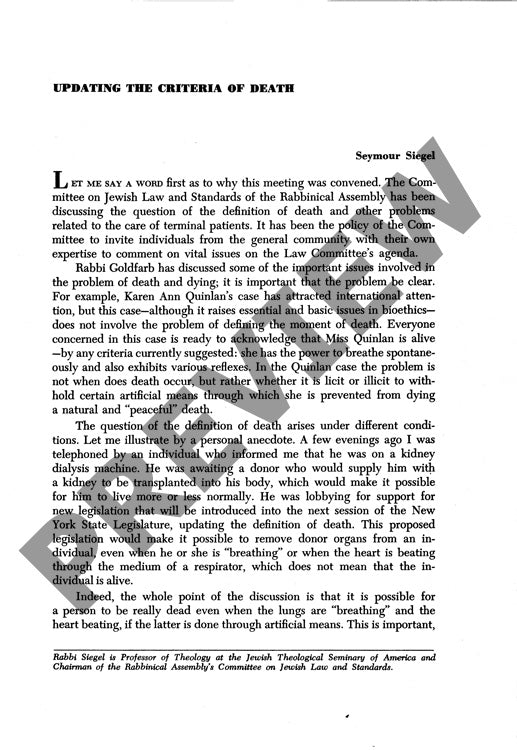Updating the Criteria of Death
Couldn't load pickup availability
As medical technology blurs the line between life and death, religious and legal frameworks struggle to keep pace with the ability to artificially maintain biological functions in brain-dead patients. The intersection of Jewish law (halakha) and modern medical standards reveals surprising compatibility in their approach to determining death, particularly regarding brain death criteria. Through analysis of Talmudic texts, rabbinical responsa, and contemporary medical literature—including the Harvard brain death criteria—a coherent framework emerges for establishing death even when artificial respiration maintains circulation. The research methodology combines comparative analysis of historical and modern sources, examination of pivotal cases like Karen Ann Quinlan, and assessment of proposed legislation in New York State. Evidence demonstrates that Jewish law supports defining death based on cessation of spontaneous breathing and brain activity, even when mechanical ventilation maintains cardiac function. From this perspective, artificially maintaining biological functions in brain-dead patients represents preservation of an "unburied corpse" rather than sustaining life. These findings support modernizing legal definitions of death to facilitate organ transplantation while maintaining ethical and religious integrity, offering a clear distinction between permissible withdrawal of artificial life support and prohibited active euthanasia.

More Information
-
Physical Description
-
Publication Information
Published 1976
ISBN
-
Publication Credits
Seymour Siegel

